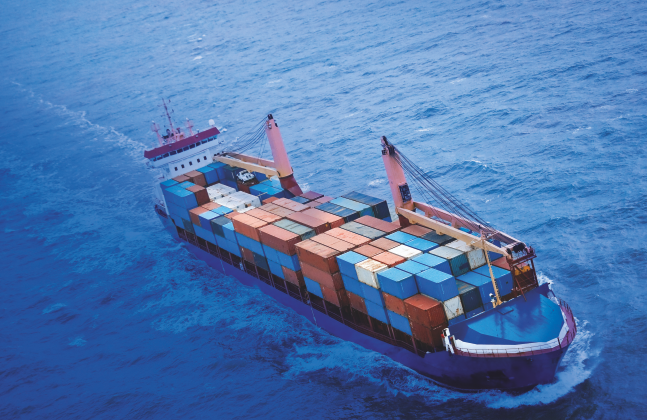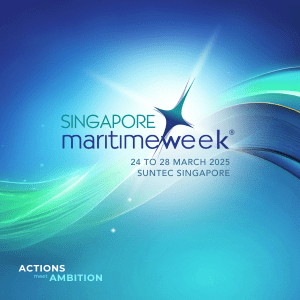Consolidation was expected to improve quality of service offered by shipping alliances, but on the contrary there has been a drop in the quality of service reveals International Transport Forum
Global shipping lines have formed alliances with an objective to lead to further improvement in services and lower freight charges. It was also expected that consolidation at a global level would lead to better services by the carriers. But on contrary global container shipping clients are not pleased with shipping lines because there is a sharp drop in quality of services.
Customer service and customer relations could be effective differentiators for container lines. More customer-focused business policies of the container lines may help carriers to develop and sustain their competitiveness in intra-alliance competition. Yet, most clients of container lines were outright critical of the level of customer service of most carriers, in particular those that outsourced their customer service to low-wage countries like India, as this deteriorated customer service to dramatic levels.
Impact of alliances on transport system
Alliances have endorsed carriers to acquire and operate mega ships which has directly contributed to reduction in service frequencies, less direct port connections, decline in schedule reliability and longer waiting times. Whereas, independent carriers manage to provide more differentiated service levels and thus more value added to transport users. Moreover, alliances have proved to be inherently instable, considering that all major carriers are in alliances, changes in one alliance have an impact on the whole sector.
The impacts of alliances on the containerised transport system taken as a whole seem to be predominantly negative. They contribute to concentration of port networks and related under utilisation of public infrastructures, in combination with other factors some of which are directly related to alliances, such as mega-ships and the behaviour of port authorities. Within ports, the buying power of the alliances can create destructive competition between terminal operators and between other port service providers such as towage companies.
Mega-ships have driven overcapacity in the sector. Ships having over 17,000 teu capacity represented around a third of the new-build container capacity during 2015-18. Overcapacity is one of the main causes of the lack of profitability of container shipping. Global alliances have further aggravated the problem of excess investment and overcapacity, which is one of the core causes of the lack of profitability of container shipping. The increasing dominance of alliances in the aftermath of the global economic crisis that started in 2008 has disrupted the cyclicality: instead of the decline of ship capacity it resulted in capacity growth that was completely disconnected from demand for containerised transport capacity. The Alliances made smaller carriers to follow market leaders in their ordering of mega-ships. Without alliances, this would not have occurred and container shipping capacity would likely have been closer to equilibrium with demand.
Alliances are supposed to improve the utilisation of ships, but this is a futile attempt. There were around 22 blank sailings on average per year on the Transpacific trade lane, and 13-14 blank sailings on the Asia- Europe trade lane during 2015-17. On average around 30 per cent of these blank sailings are known less than four weeks in advance, which has repercussions for the supply chains of shippers. On the other hand, carriers are sometimes confronted with late cargo arrival or no-shows from shippers. Moreover, there are few indications that alliances have helped carriers to improve their financial performance.
Container lines have by nature limited opportunity to differentiate their core service, port-to-port transportation, since it is standardised and homogenous. This homogeneity and the lack of difference between offerings of container lines have made containerised transport services a commodity-like service. The price sensitivity of container shipping is also high since shippers usually look for the best price as they perceive the core product identical and as switching costs are considered to be low.
Differentiation in service offerings would enable carriers to better serve their customers. Moreover, differentiation in service offerings could also help container shipping to attract cargo from other transport modes or shipping sectors. But, global alliances reduce the opportunities for differentiation among alliance partners. Differentiation on their core offerings such as transit time, on-time sailings and space availability at the vessel, are all covered via the vessel sharing and are equivalent across the alliance.
There are numerous indications which show us that service quality has gone down since the creation of the new alliances in 2017. For example, vessel delays have gone up, the average delay for all vessels in the second half of 2017 was 1.02 days, this was 0.60 days in the second half of 2016. This category includes vessels arriving ahead of schedule, on schedule and behind schedule. If we focus on the vessels that arrive behind schedule, the indicators are worse. The average delay for late vessel arrivals was 3.96 days, considerably higher than the 3.35 days recorded in the second half of 2016.
How shipping alliances impact consumers
There seems to be a decrease in containerised freight rates over the last two decades, but the effective rate paid by clients through so-called surcharges have soared. The multitude of surcharges makes price comparison by customers difficult, so this complicates the assessment of whether transport users benefit from transport efficiency from alliances. Surcharges represent a very significant addition to base rates and sometimes even a higher proportion of total costs compared to base rates.
These surcharges are levied on services that were earlier considered usual shipping service, but are now categorised as value-added. Surcharges accounted for more than 50% of the total freight charged to customers in 9 of 14 markets. There are indications that show carriers have been involved in revenue generation in applying higher surcharges which did not reflect actual costs. The existence of surcharges also makes it sometimes difficult to assess whether alliances are indeed passing on price benefits to consumers.
The bigger ships used by alliance carriers require many operational efficiencies such as larger port infrastructures, dredging works, buffer capacity in ports to accommodate larger peak loads. These infrastructure adaptations require investments that are often in excess of the operational savings caused by bigger ships, but these costs are often burdened by public bodies and not recovered via fees to carriers.
The latest round of mergers has led to the top eight shipping carriers gobbling up the largest chunk of cargo, effectively lowering customer choices. Global alliances of the mid-1990s provided cooperation space between smaller carriers, while alliances are nowadays cooperation tools for the largest container lines. The three global alliances (2M, Ocean and THE Alliance) that are operational since April 2017 represent around 80 per cent of the overall container trade and operate around 95 per cent of the total ship capacity on East-West trade lanes, where major containerised flows occur. With swiftly evolving industry consolidation, the market power of carriers impacting costs of trade will increasingly have an effect on consumers and the cost of the goods.
In order to empower consumer from colossal shipping alliances, it’s high time that anti-trust exemptions to shipping liners be removed. Most countries now believe that container companies do not deserve exemptions, and are removing anti-trust exemptions granted to them earlier, i.e., New Zealand did away with a set of antitrust exemptions given to shipping lines last year.








